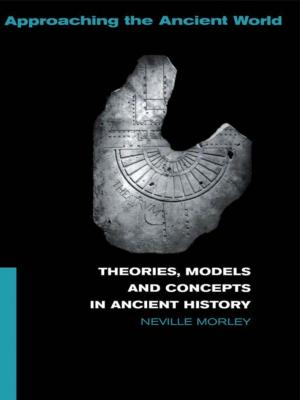Israeli Visions and Divisions
Nonfiction, Social & Cultural Studies, Political Science, Politics, Practical Politics, Social Science| Author: | Myron J. Arnoff | ISBN: | 9781351309868 |
| Publisher: | Taylor and Francis | Publication: | January 16, 2018 |
| Imprint: | Routledge | Language: | English |
| Author: | Myron J. Arnoff |
| ISBN: | 9781351309868 |
| Publisher: | Taylor and Francis |
| Publication: | January 16, 2018 |
| Imprint: | Routledge |
| Language: | English |
This finely etched, on-site work examines the relationships between the changing political system and political culture in Israel, with particular focus on the decade of the 1980s. Written by a scholar equally at home in the United States and in Israel, and intellectually equally at home in political science and anthropology, Israeli Visions and Divisions is a fundamental contribution to a literature long on passion and short on reason, which perhaps is an academic reflection of social life in this deeply troubled land.Aronoff starts from the belief that the basic conflicting and even contradictory interpretations over what should be the exact character of Israel as a Jewish state continues to be the source of the most serious division among Jews within contemporary Israel. As a consequence, consensus politics yields to coalition politics; and prospects for a future consensus are dim. Conflict among Jewish political and religious groups, and between Jews and Arabs, is aggravated by the uses of Zionist symbolism in a fragmented political culture.This is a serious critique made from a sympathetic quarter. Aronoff suggests that the Israeli political system is undergoing a crisis of political legitimacy, exemplified by the rise of extraparliamentary movements. The parliamentary system accentuates' these divisions by making every minor tradition and vision part of the legislative and executive processes.Israeli Visions and Divisions is not a pessimistic reading. The author is convinced that the way is open for a move away from particularism and tribalism, and toward a new universalism and humanism. The old policies have proven bankrupt, and th,e old ideologies have lost their salience. The book is rich in detail and profound in outlook. It will be greeted by those interested in new policies as well as by students of the Middle East who hope to piece together what has gone awry in the land of milk and honey.
This finely etched, on-site work examines the relationships between the changing political system and political culture in Israel, with particular focus on the decade of the 1980s. Written by a scholar equally at home in the United States and in Israel, and intellectually equally at home in political science and anthropology, Israeli Visions and Divisions is a fundamental contribution to a literature long on passion and short on reason, which perhaps is an academic reflection of social life in this deeply troubled land.Aronoff starts from the belief that the basic conflicting and even contradictory interpretations over what should be the exact character of Israel as a Jewish state continues to be the source of the most serious division among Jews within contemporary Israel. As a consequence, consensus politics yields to coalition politics; and prospects for a future consensus are dim. Conflict among Jewish political and religious groups, and between Jews and Arabs, is aggravated by the uses of Zionist symbolism in a fragmented political culture.This is a serious critique made from a sympathetic quarter. Aronoff suggests that the Israeli political system is undergoing a crisis of political legitimacy, exemplified by the rise of extraparliamentary movements. The parliamentary system accentuates' these divisions by making every minor tradition and vision part of the legislative and executive processes.Israeli Visions and Divisions is not a pessimistic reading. The author is convinced that the way is open for a move away from particularism and tribalism, and toward a new universalism and humanism. The old policies have proven bankrupt, and th,e old ideologies have lost their salience. The book is rich in detail and profound in outlook. It will be greeted by those interested in new policies as well as by students of the Middle East who hope to piece together what has gone awry in the land of milk and honey.















